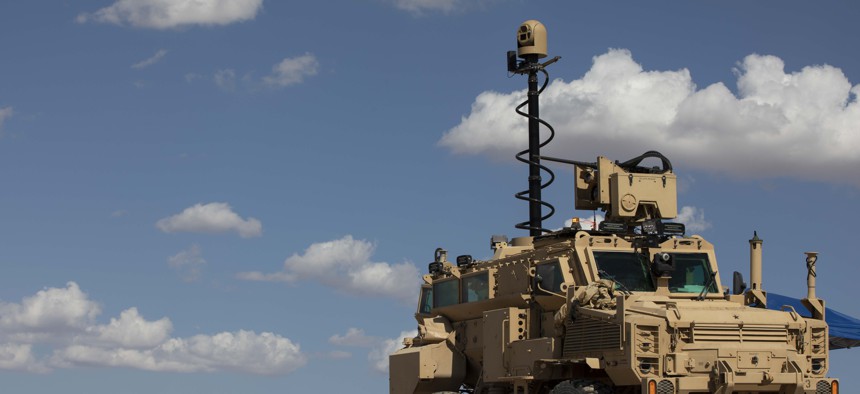
The Department of Defense is moving toward a future when many processes now done by hand will be done automatically by artificial intelligence and machine learning. The need is urgent and our money is limited, and so we need a better way to plan investments and prioritize changes as we move toward this Convergence, this new way of operating.
One approach starts by breaking Convergence into three parts. First, get our main warfighting systems to autonomously exchange information. Second, use AI/ML to change how operational commands execute four types of decision cycles. Third, refocus Army corps and service component commands to use commercial technologies being considered by the military services.
The term “Convergence” is used to mean slightly different things across the service branches; let us define it here as the shift away from systems that depend on manual inputs, human-to-human distribution, and analog written procedures that help determine “who else needs to know.” These systems will be replaced by automated ones that continuously manage the data inputs, distribution, and exchanges in all of DOD’s realms: sensors, shooters, maneuver, sustainment, protection and information. Note that we are not talking about removing humans from decision loops, just changing their roles from inputting key strokes and assessing data entries to making decisions.
From the moment a system is powered on, it should be informing the other systems in an established network, and be informed by them. We will need both a data standardization requirement that will allow all future U.S. systems to exchange data easily and a “data fabric” that will facilitate connections with allied and partner militaries current systems.
In the meantime, we need a way to try out and test data-exchange ideas without the expense and wear of today’s field experiments. This role should be filled by joint systems integration labs, where officials and engineers can test commercial innovations and determine just how many data processes can be automated between warfighting systems. The labs will also help develop kill webs for combatant commands, including for competition, crisis, and conflict situations.
As these labs identify the tools needed to turn good ideas into operational capabilities, DOD will need development, security, and operations (DevSecOps) facilities where software and cybersecurity developers can work together. To be sure, DOD will largely rely on private companies to build these new tools. But the department must have enough in-house expertise to ensure experimentation and software in the private sector actually do support our needs.
All this will serve the new Joint All Domain Command and Control, or JADC2, strategy, which aims to transform military decision-making by automating much of the data collection and analysis now performed by humans. But how can we know where to focus our efforts? I suggest that we should look at what tools and gear theater commands need to improve the four primary decision cycles that they must remain ready to execute: prioritize operational threats; determine possible delivery mediums; select delivery platforms; and define collection capabilities to identify, track or assess. By figuring out what is needed to help automate these loops, the services will be able to prioritize development efforts and best spend their time and money.
For the Army, this type of collaboration would require expanding Convergence efforts to include a larger role for corps and service component commands. Multi-Domain Transformation, a recent paper by Chief of Staff Gen. James McConville, identifies the corps as the primary echelon for synchronizing capabilities across services and at extended ranges—in the argot, for multi-domain operations and joint all-domain operations. This means that corps commands must become more than an executor of decisions by the joint force commander; they must also develop the joint interagency skills for integrating well beyond the range of Army maneuver forces. The user feedback and data generated by these more integrated units would immediately help innovate in current systems as well as inform efforts to modernize to meet threats expected in 2028.
No comments:
Post a Comment